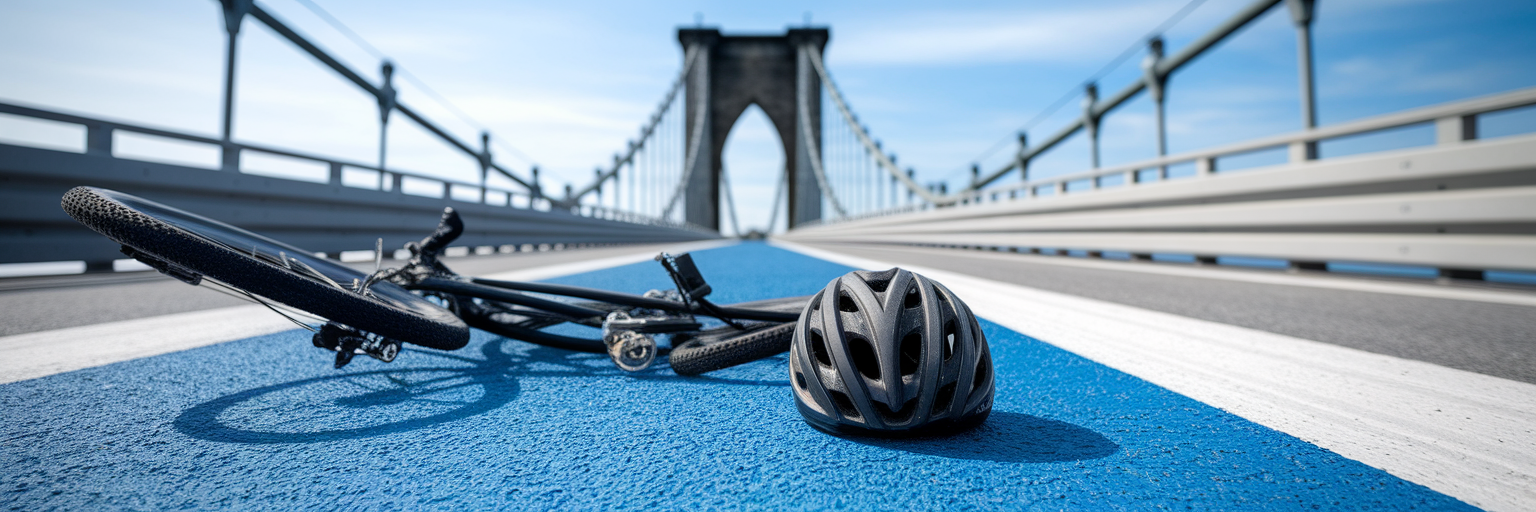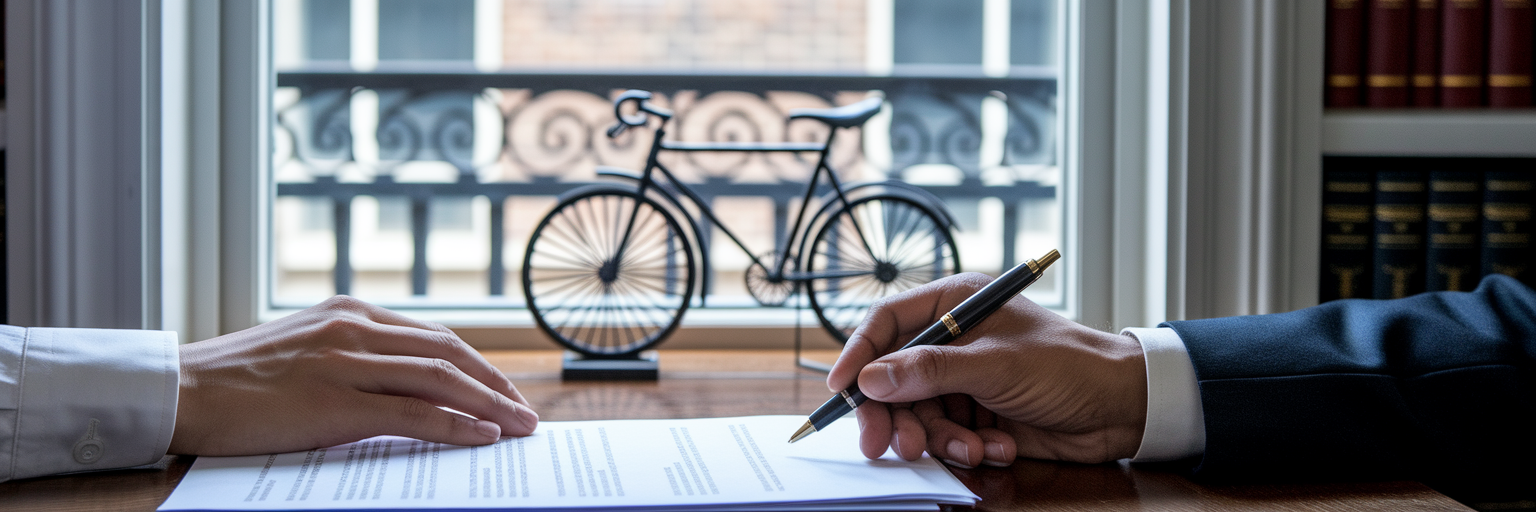The Arthur Ravenel Jr. Bridge offers one of the most iconic views in Charleston, attracting cyclists and pedestrians daily. Its shared path is a celebrated community feature, but its constant use also means accidents can happen. If you find yourself in a collision on the bridge, the moments that follow are disorienting. Knowing what to do can protect your health and your rights.
Prioritize Your Immediate Safety on the Bridge
After the initial shock of a crash, your first instinct might be to jump up. Resist it. The next few minutes are critical, and your actions should be deliberate and focused on safety. You are likely in pain, and the environment around you is still active with pedestrians and other cyclists.
Follow these steps methodically:
- Assess Your Body. Before making any sudden movements, do a mental check. Do you feel sharp pain in your head, neck, or back? If you suspect a serious injury, remain as still as possible. Moving could worsen a spinal injury. Your well being is the absolute first priority.
- Move to a Safer Location. The bridge’s shared path is narrow. If you are able to move without significant pain, carefully shift yourself and your bicycle out of the main flow of traffic. This simple act is a crucial element of Ravenel Bridge bike safety, as it helps prevent a secondary collision involving others.
- Call 911 Immediately. This is not optional, even if you feel your injuries are minor. Calling 911 dispatches both emergency medical services to evaluate you and a police officer to create an official report of the incident. Do not let anyone convince you that involving law enforcement is unnecessary.
- Maintain Composure. Emotions run high after an accident. Avoid engaging in arguments or assigning blame. Your focus should be on de-escalation and waiting for professionals to arrive. The side of the path is not the place for a debate.
Officially Document the Incident with Law Enforcement
Once you have moved to a safe spot and called for help, your next interaction will likely be with an officer from the Charleston or Mount Pleasant police department. This conversation is more than just a formality. The police report they create becomes the foundational document for any future insurance claim or legal action. It is the first official record of what happened.
When speaking with the officer, keep these points in mind:
- Cooperate and Be Clear: Provide a factual, calm account of the events. Answer the officer’s questions directly, but do not volunteer extra information.
- Stick to the Facts: This is crucial. Do not guess, speculate, or admit any fault, even partial. Instead of saying, “I guess they didn’t see me,” state what you know: “The car turned into the bike lane in front of me.” Let the facts speak for themselves.
- Let the Officer Handle Information Exchange: The officer is responsible for collecting names, contact details, and insurance information from everyone involved. If the other party is uncooperative, the officer has the authority to manage the situation.
- Obtain Key Details: Before the officer leaves, make sure you get their name, badge number, and the police report number. This information is essential to report a bike accident in Charleston SC and retrieve the official document later. This record is often the first piece of evidence one of our Charleston personal injury lawyers will review to assess your case.
Gather Your Own Evidence at the Scene
While the police report is vital, the evidence you collect yourself can capture critical details an officer might overlook. Your smartphone is the most powerful tool you have in this moment. If you are physically able, start documenting everything around you. Answering the question of what to do after a bike crash in Charleston often starts with creating your own record.
Use your phone’s camera to take more photos and videos than you think you need. Capture everything from multiple angles. This personal documentation can provide context that is invaluable later. Focus on capturing clear images of your injuries, damage to your bicycle and gear, and the other vehicle involved. These visuals directly link the physical and material harm to the incident.
| Evidence Type | What to Capture | Why It’s Important |
|---|---|---|
| Your Injuries | Cuts, bruises, scrapes, etc. | Directly links physical harm to the incident. |
| Bicycle & Gear | Bent frame, broken parts, damaged helmet. | Establishes property damage costs. |
| Other Vehicle(s) | License plate, points of impact, overall damage. | Identifies the other party and shows the collision’s severity. |
| Accident Scene | Wide shots of the location, debris, skid marks. | Provides context for how the accident occurred. |
| Surroundings | Relevant traffic signs, path conditions, weather. | Can help establish negligence or contributing factors. |
| Witness Information | Names and phone numbers. | Provides unbiased accounts to support your claim. |
Politely ask any pedestrians or cyclists who stopped if they would be willing to serve as a witness. Get their name and phone number. Finally, open your phone’s voice recorder and make a short memo detailing everything you remember about the accident. Your memory of the event will be sharpest right after it happens.
Seek a Prompt and Thorough Medical Evaluation
After a crash, adrenaline floods your system. This powerful hormone can mask serious pain, leading you to believe you are “fine.” This is a dangerous assumption. Seeking a medical evaluation is not just a suggestion; it is a necessary step to protect your health and your legal rights. Many common injuries do not present symptoms for hours or even days.
Delayed-symptom injuries can include:
- Concussions or Traumatic Brain Injuries
- Whiplash and other neck injuries
- Soft tissue damage like sprains or tears
- Internal bleeding or organ damage
Visiting an emergency room, an urgent care clinic, or your primary care physician creates an official, time-stamped medical record. This documentation is the only way to legally prove that your injuries were a direct result of the bicycle accident on the Ravenel Bridge. Without it, an insurance company could argue your injuries occurred at a different time. Just as importantly, follow all medical directives you receive. Attending follow-up appointments and completing physical therapy shows you are taking your injuries seriously and helps ensure your fullest possible recovery.
Navigating Insurance Claims and Legal Counsel
Once your immediate health concerns are addressed, the financial and legal complexities begin. The first step is to report the accident to your health insurance provider. What many people do not realize is that other policies may also offer coverage. Surprisingly, your own auto insurance may provide benefits through Personal Injury Protection (PIP) or Uninsured/Underinsured Motorist (UIM) coverage, a concept familiar to those who have dealt with complex car accident claims.
The question of whether to hire an attorney often arises. You should strongly consider consulting a Charleston bike accident lawyer if you sustained any injuries, if the other party is disputing fault, or if your medical bills are becoming substantial. An experienced attorney manages all communications with insurance adjusters, who are trained to minimize payouts. They will work to calculate your total damages, including medical expenses, lost wages, and the impact of pain and suffering, to fight for fair compensation.
It is also important to act promptly. As detailed in South Carolina’s legislative code, the law under S.C. Code § 15-3-530 generally gives you three years from the date of the accident to file a lawsuit. Most personal injury firms offer a no-risk opportunity to discuss your case, so you can get your questions answered and understand your options. You can reach out for a free consultation to start the process.
Managing Your Long-Term Recovery
The journey after an accident extends beyond the immediate aftermath. Staying organized and mindful of your well being is key to a successful recovery. Start by creating a dedicated folder for all accident-related documents. This includes the police report, medical bills, receipts for prescriptions, and repair estimates for your bicycle. Having everything in one place simplifies the process for you and your attorney.
Consider keeping a simple journal to track your recovery. Note your daily pain levels, any physical limitations you experience, and the emotional impact of the crash. This narrative can provide powerful evidence for the “pain and suffering” component of a personal injury claim. It is also normal to feel fear or anxiety about cycling again. Be patient with yourself and prioritize your mental health alongside your physical healing.
To recap, your response should be built on these pillars:
- Prioritize Safety
- Document Everything
- Seek Medical Care
- Protect Your Rights
Remember, you do not have to manage this complex process alone. Professional guidance is available to help you secure a fair recovery and get back on your feet. For more information, we are here to help.


